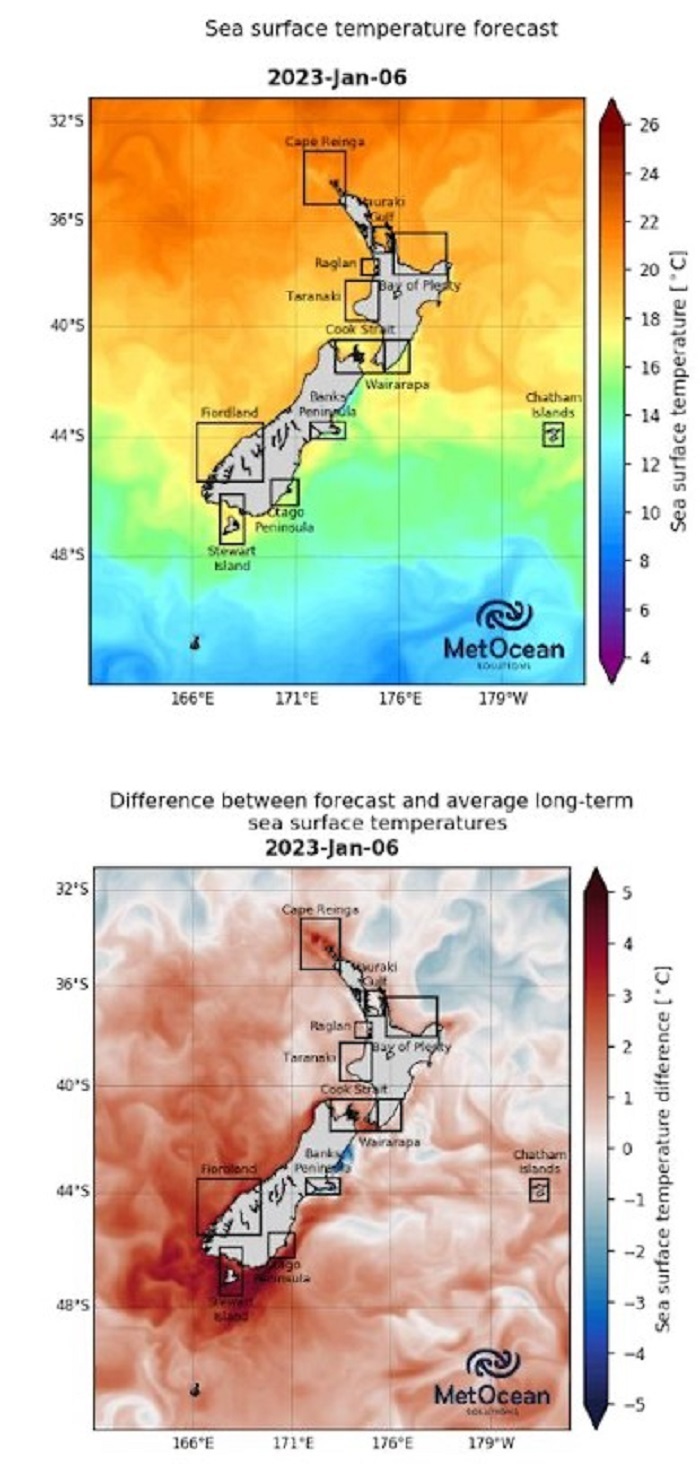Severe marine heatwave comes to the South
Anna Robb
04 January 2023, 4:45 PM
 If you’re travelling to the coast pack your togs, the sea temperatures are around four degrees higher than usual for this time of year
If you’re travelling to the coast pack your togs, the sea temperatures are around four degrees higher than usual for this time of yearCentral residents holidaying at the coast at the bottom of the South Island are experiencing a severe marine heatwave - with sea surface temperatures reaching four degrees or more above average.
This is according to MetService oceanographer Dr Joao de Souza, who is tracking marine heatwaves as part of the Moana Project.
Joao said sea surface temperatures are rising rapidly at the moment along the West Coast of the South Island, in Fiordland, around Rakiura (Stewart Island) and towards the Otago Peninsula.
“The marine heatwaves we’ve seen building since before Christmas are expected to reach a new high Wednesday, with coastal patches off the West Coast forecast to reach 4.7 degrees above average for this time of year.”
Fiordland will experience high water temperatures, and around Rakiura extending towards the Otago Peninsula we’re expecting a ‘severe’ marine heatwave from January 5-6.
Surface temperatures are forecast to reach 18.4 degrees, compared to the 13.5 degree average – a difference of almost five degrees.

Sea surface temperature forecast (top) and difference between forecast and average long-term sea surface temperature (below)
While it is good news for holiday makers with balmy sea temperatures, the warm ocean temperatures sometimes cause more rainfall on land.
“A warmer sea heats the air travelling over it and because warmer air can mean more moisture, we can get more rain,” Joao said.
Persistent marine heatwaves may cause problems for marine life.
“Last year, a similarly warm marine heatwave in Fiordland reached great depths and caused widespread bleaching of sea sponges, and recent West Coast kelp disappearance has also been attributed to marine heatwaves.”
The seven day forecasted sea surface temperatures and how they differ from the 25-year average (called the temperature anomaly) for New Zealand’s ocean can be explored on SwellMap, the free MetService marine forecasting website.
The MetService-led Moana Project is a research project funded by the Ministry of Business Innovation and Employment. The project aims to improve ocean observation and forecasting, including of marine heatwaves.
Closer to Central, the water temperature of Lake Dunstan on January 3 was rivalling that of the Southern seas - it was a warm 18 degrees.
Champagne Gully, Jackson’s Inlet, the Clyde Boat ramps, Pisa Moorings and the sheltered area near the Clyde Rowing Club were popular for boaties and swimmers and crowded over the public holiday period.






